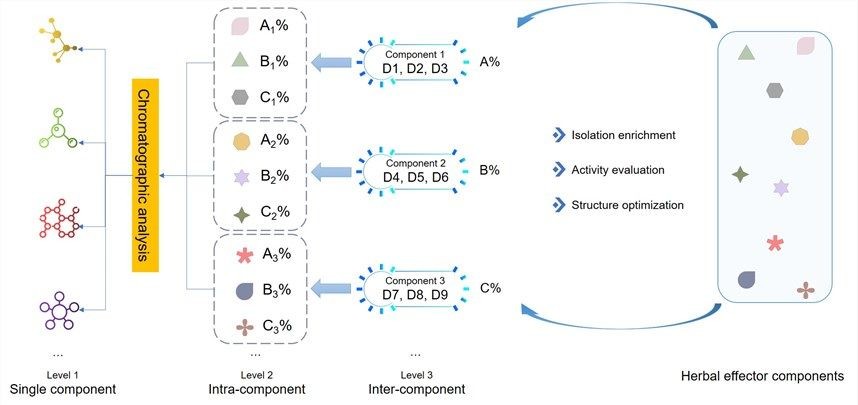Pathological Analysis of Herbal Medicines
Inquiry
Herbal medicine is a complex system of chemical components, the material basis of which is made up of multiple components, which are not simply piled up; the active ingredients are divided into different components according to their physicochemical and pharmacological properties. These components have certain compositional and quantitative relationships within and between components, i.e., structural characteristics, which produce synergistic effects through multi-target, multi-pathway, and multi-level integration and regulation. The key to the prevention and treatment of diseases is not only the composition of the herbal medicine but more importantly, the quantitative relationship between the medicines. The construction and elucidation of safe and effective component structures for herbal medicines will be a problematic issue in herbal pathology research and one that Lifeasible will strive to provide for you.

A range of component-structured herbal medicines effectively regulate disease networks, and the components are not arranged in a disorderly manner between/within components. The first problem we address in constructing component-structured herbal medicines is to select several representative and contributing members so that their overall properties reflect those of the components and then to carry out an optimization analysis of the quantitative ratio of the herbal components. By carrying out inter and intra-component structure-pathological effect analyses, we can optimize the composition of the active components of herbal medicines, from the quantitative-potential relationship of a single component to the qualitative-potential relationship of the multidimensional structure of the entire herbal substance base. This allows you to carry out pharmacological studies of herbal medicines in the areas of mental, cardiovascular, anti-tumor, endocrine, and metabolic relevance.
 Figure 1. Multi-dimensional structure in three levels of herbal medicines.
Figure 1. Multi-dimensional structure in three levels of herbal medicines.
Application examples
- Analysis of the herbal pathology of post-traumatic stress disorder (PTSD)
PTSD is a neuropsychiatric disorder characterized by generalization of fearful memories, flashbacks or nightmares of traumatic events, hypervigilance, and negative emotions. The occurrence of PTSD can easily lead to complications such as depression and anxiety, which can seriously reduce patients' quality of life.
We first applied chemical analysis to characterize the main pharmacological components of the herbal compound, followed by further pharmacological experiments to reveal the ameliorative effects of the herbal compound on animal models of PTSD and the mechanism of action in vivo using modern experimental techniques.
Herbal medicine is a complex and extensive system, and the components of herbal medicine are also a collection of multiple chemical components. The structure of herbal components can be likened to the barcode of herbal medicine, which is the material basis of herbal medicine for disease control. Lifeasible will continue to explore herbal medicines with proven efficacy, identify how each effector component can effectively regulate the pathological network through multiple targets and pathways, and carry out optimization studies based on the mechanism of quantitative ratio, obtain herbal medicines with clear composition, reliable efficacy and clear mechanism of component structure. Please feel free to contact us to explore the scientific implications of herbal medicine for disease control.
For research or industrial raw materials, not for personal medical use!
Related Services


 Figure 1. Multi-dimensional structure in three levels of herbal medicines.
Figure 1. Multi-dimensional structure in three levels of herbal medicines.